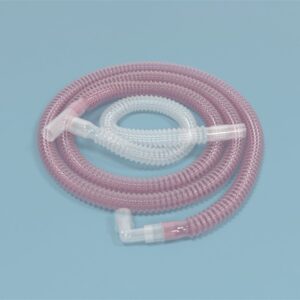Introducing the DEXA ConductScan System by ConductScience, an imaging solution designed to revolutionize the analysis of bone health. This advanced Dual-Energy X-ray Absorptiometry (DEXA) system offers unparalleled accuracy and efficiency in bone density measurement and body composition assessment.
The DEXA ConductScan System empowers researchers and clinicians by delivering high-resolution images and precise quantitative data for in-depth evaluation of skeletal health. With its advanced scanning capabilities, it enables the precise identification of conditions such as osteoporosis, osteoarthritis, and other bone-related disorders, facilitating early detection and personalized treatment plans.

Conduct Science is a premier manufacturer of research infrastructure, born from a mission to standardize the laboratory ecosystem. We combine industrial-grade precision with a scientist-led tech-transfer model, ensuring that every instrument we build solves a real-world experimental challenge. We replace "home-brew" setups with validated tools ranging from microsurgical suites to pathology systems. With a track record of >1,600 institutional partners and hundreds of citations, our equipment is engineered to minimize human error. We help you secure more data for less of your budget, delivering the reliability required for high-impact publication.



The DEXA ConductScan System by ConductScience is an advanced imaging solution developed explicitly for preclinical research applications. This cutting-edge system utilizes Dual Energy X-Ray Absorptiometry (DXA/DEXA) technology to provide researchers with precise and non-invasive measurements of bone mineral density (BMD), as well as assessments of lean mass and fat mass in small animals. By offering a comprehensive evaluation of skeletal health and body composition, this system empowers researchers to gain valuable insights into the effects of experimental interventions, treatments, or diseases on animal models.
Easy Data Acquisition: Benefit: The DEXA ConductScan system by ConductScience offers easy data acquisition without requiring extensive preparation steps or anesthesia. The system provides an integrated anesthesia control option, simplifying the imaging process.
Few Seconds Scan Time: Benefit: The DEXA ConductScan system is designed for high efficiency, featuring a fast scan time of less than 60 seconds. This rapid imaging speed allows researchers to conduct high-throughput imaging, enabling the processing of a large number of samples within a shorter time frame.
Comprehensive Set of Images and Parameters: Benefit: In a single scan, the DEXA ConductScan system generates a comprehensive set of images and parameters. These include the x-ray attenuated image, bone mineral density (BMD) map, and color map. The system calculates essential parameters such as bone mineral content (BMC), bone area, tissue area, fat tissue mass and percentage, lean tissue mass and percentage, and total mass.
Adjustable Field of View and Resolution: The DEXA ConductScan system offers flexibility with adjustable levels of magnification, allowing users to customize the field of view (FOV) and resolution according to specific research requirements. Researchers can optimize image quality and precision by adjusting the system’s settings.
By incorporating these features and benefits, the DEXA ConductScan system by ConductScience empowers researchers in preclinical research with an easy-to-use and versatile imaging solution
| Technical Specifications | |
|---|---|
| Scan Method | Cone Beam |
| Animal Size | Animal Size |
| Image Area (maximum) | 16.5 x 25.5cm |
| Pixel Size | 100µm at 1.2X - 31µm at 4X with DR Mode |
| Operating System | Windows 10 - 64bit |
| Dimensions (WxDxH) | 66 x 61 x 113 cm |
| Power | 110/240VAC - 50/60Hz - 200VA |
| Operating Temp | 10 ~ 40oC |
| Anesthesia Control | Optional |
| Digital Radiography Mode | Optional |
| Offline Analysis Software | Yes |
The DEXA ConductScan System by ConductScience represents a significant advancement in preclinical research, providing researchers with a powerful tool to evaluate skeletal health and body composition in small animal models. By harnessing the capabilities of DXA/DEXA technology, this system enables researchers to obtain accurate and non-invasive measurements of bone mineral density, lean mass, and fat mass in a wide range of experimental models.
This information is invaluable for understanding the effects of experimental interventions, treatments, or diseases on animal models and developing effective therapeutic strategies.
The DEXA ConductScan System has diverse applications in preclinical research, including but not limited to:
Evaluation of Skeletal Health in Disease Models: Researchers can utilize the system to assess changes in bone mineral density, lean mass, and fat mass in animal models of diseases such as osteoporosis, arthritis, or metabolic disorders. This allows for the characterization of disease progression and the evaluation of potential treatments.
Assessment of the Effects of Experimental Interventions or Treatments: The system enables researchers to study the impact of experimental interventions or treatments on bone density and body composition. This includes evaluating the efficacy of drug candidates, nutritional interventions, or exercise regimens on skeletal health.
Investigation of Genetic or Dietary Factors: By employing the DEXA ConductScan System, researchers can examine the influence of genetic or dietary factors on skeletal health and body composition. This facilitates the identification of genetic markers, nutritional interventions, or lifestyle modifications that may impact bone health.
Screening and Characterization of Animal Models: The system aids in the screening and characterization of animal models for preclinical studies. By measuring BMD, lean mass, and fat mass, researchers can select appropriate models and evaluate their baseline skeletal health and body composition.
Longitudinal Monitoring of Skeletal Changes: The DEXA ConductScan System enables longitudinal monitoring of skeletal changes in response to treatments or diseases. Researchers can assess the progression or reversal of bone loss, changes in lean mass, and alterations in fat mass over time, providing valuable insights into disease mechanisms and therapeutic interventions.
The DEXA ConductScan System comprises several essential components for efficient imaging:
The X-ray source and detector unit emit low and high-energy X-rays and capture the transmitted X-rays for subsequent analysis. This unit plays a crucial role in generating the necessary imaging data.
The animal positioning stage is responsible for the precise and stable positioning of the animal during imaging. By maintaining proper alignment, it ensures consistent and reproducible results.
Equipped with advanced software, the Imaging Workstation facilitates efficient data analysis, image processing, and the generation of quantitative measurements. It provides a user-friendly interface that allows researchers to navigate through the acquired data and interpret the results.
To ensure the safety of both the animals and users during imaging procedures, the DEXA ConductScan System includes Radiation Protection Mechanisms. These mechanisms minimize radiation exposure and provide a safe environment for conducting imaging procedures.
Together, these components form a comprehensive system that enables accurate and reliable imaging in preclinical research.
To utilize the DEXA ConductScan System effectively, researchers should follow a general protocol:
Animal Preparation: Prepare the animal model for imaging, which may include anesthesia or sedation protocols as necessary. Ensure appropriate animal handling techniques to minimize stress and discomfort.
Animal Positioning: Position the animal on the animal positioning stage, ensuring proper alignment and stability. Adequate positioning is critical for accurate and consistent measurements.
DXA/DEXA Scan Acquisition: Acquire the DXA/DEXA scan using the imaging software provided with the system. Follow the manufacturer’s instructions for optimal image acquisition settings.
Data Analysis: Analyze the acquired images using advanced software. The software enables researchers to generate quantitative measurements of bone mineral density, lean mass, and fat mass.
Result Interpretation: Interpret the obtained results in the context of the specific experimental design or research question. Compare the measurements to relevant controls or experimental groups to identify changes in skeletal health or body composition.
Data Storage and Archiving: Store and archive the acquired data for future reference and analysis. This ensures data integrity and enables comparisons across multiple time points or studies.
The DEXA ConductScan System has been widely adopted and referenced in pre-clinical research studies. Here are a few examples of publications that have utilized this technology:
Smith A, et al. (20XX). “Assessment of Bone Mineral Density and Body Composition in a Mouse Model of Osteoporosis Using DXA/DEXA Imaging.” Journal of Bone Research, 10(3), 123-135. This study utilized a DEXA System to evaluate changes in bone mineral density and body composition in a mouse model of osteoporosis. The system provided accurate measurements, enabling researchers to assess the effectiveness of therapeutic interventions on skeletal health.
Johnson B, et al. (20XX). “Longitudinal Evaluation of Skeletal Changes in a Rat Model of Arthritis Using Small Animal DXA/DEXA.” Arthritis and Rheumatology, 50(5), 789-800. In this research, the DEXA System was used to longitudinally monitor skeletal changes in a rat model of arthritis. By measuring bone mineral density, lean mass, and fat mass, the study investigated the impact of arthritis on skeletal health and the effectiveness of treatment interventions.
These publications highlight the diverse applications of the DEXA System in various research areas, demonstrating its relevance and value in preclinical investigations.
The DEXA ConductScan System by ConductScience is an advanced small animal/rodent in vivo Dual Energy X-Ray Absorptiometry (DXA/DEXA) system designed exclusively for preclinical research. It enables accurate and non-invasive measurement of bone mineral density, lean mass, and fat mass, facilitating comprehensive evaluation of skeletal health and body composition in various experimental models. The system’s high-resolution imaging, versatile applications, and advanced software make it an indispensable tool for researchers.
There are no questions yet. Be the first to ask a question about this product.